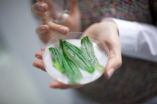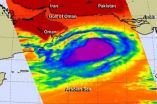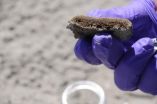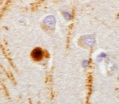(Press-News.org) Proximity to other meadows increases disease resistance in wild meadow plants, according to a study led by Anna-Liisa Laine at the University of Helsinki. The results of the study, analysing the epidemiological dynamics of a fungal pathogen in the archipelago of Finland, will be published in Science on 13 June 2014.
The study surveyed more than 4,000 Plantago lanceolata meadows and their infection status by a powdery mildew fungus in the Åland archipelago of Finland. The surveys have continued since 2001, resulting in one of the world's largest databases on disease dynamics in wild plant populations.
"Contrary to expectations of ecological laws, there was less disease in those areas of the landscape that supported dense meadow networks. This suggests that disease resistance has increased in these areas where there's more gene flow between the plant populations. This hypothesis was confirmed in a laboratory study where we measured a higher susceptibility to infection in plants originating from isolated meadows. The results are a powerful demonstration that while plants stand still, their genes don't. Landscape structure strongly impacts how pollen and seed travel, shaping the genetic diversity of local populations," says Laine.
In nature, Laine says, diseases appear to be "between the devil and the deep blue sea" – either their host populations are small and fragmented or, when abundant, they have evolved higher levels of disease resistance.
Pathogens and pests are not unique to agricultural environment as wild populations also host diverse pathogen communities. However, devastating epidemics that are characteristic of agricultural pathogens are rarely documented in nature.
According to Laine, the mechanisms that keep diseases "in check" in nature are poorly understood. Most epidemiological research targets the phase of rapid disease spread. However, much could be learned by studying the mechanisms that enable long-term persistence of infection at moderate levels. The Plantago meadow network is ideal for this purpose as typically less than 10 per cent of the meadows are infected.
INFORMATION:
Anna-Liisa Laine is an Academy Research Fellow funded by the Academy of Finland. Her research on disease evolution and epidemiology is funded through the Academy's Centre of Excellence Programme and the European Research Council's Starting Grant funding scheme.
More information:
Anna-Liisa Laine, tel. +358 40 737 4226, anna-liisa.laine(at)helsinki.fi
Article: Jousimo, J., Tack, A. J. M., Ovaskainen, O., Mononen, T., Susi, H., Tollenaere, C. & Laine, A.-L. Ecological and evolutionary effects of fragmentation on infectious disease dynamics. 10.1126/science.1253621
Photo: Susanna Kekkonen
Podosphaera plantaginis on Plantago lanceolata leaf
Academy of Finland Communications
Communications Specialist Leena Vähäkylä
tel. +358 295 335 139
firstname.lastname(at)aka.fi
Habitat fragmentation increases vulnerability to disease in wild plants
2014-06-12
ELSE PRESS RELEASES FROM THIS DATE:
Quantum computation: Fragile yet error-free
2014-06-12
This news release is available in German and Spanish. Even computers are error-prone. The slightest disturbances may alter saved information and falsify the results of calculations. To overcome these problems, computers use specific routines to continuously detect and correct errors. This also holds true for a future quantum computer, which will require procedures for error correction as well: "Quantum phenomena are extremely fragile and error-prone. Errors can spread rapidly and severely disturb the computer," says Thomas Monz, member of Rainer Blatt's research group ...
Movies with gory and disgusting scenes more likely to capture and engage audience
2014-06-12
Washington, DC (June 12, 2014) – We know it too well. We are watching a horror film and the antagonist is about to maim a character; we ball up, get ready for the shot and instead of turning away, we lean forward in the chair, then flinch and cover our eyes – Jason strikes again! But what is going on in our body that drives us to this reaction, and why do we engage in it so readily? Recent research published in the Journal of Communication found that people exposed to core disgusts (blood, guts, body products) showed higher levels of attention the more disgusting the content ...
NASA takes Tropical Cyclone Nanuak's temperature
2014-06-12
Tropical Cyclone Nanauk is holding its own for now as it moves through the Arabian Sea. NASA's Aqua satellite took its cloud top temperatures to determine its health.
In terms of infrared data viewing tropical cyclones, those with the coldest cloud top temperatures indicate that a storm is the most healthy, most robust and powerful. That's because thunderstorms that have strong uplift are pushed to the top of the troposphere where temperatures are bitter cold. Infrared data, such as that collected from the Atmospheric Infrared Sounder (AIRS) instrument that flies aboard ...
Findings point toward one of first therapies for Lou Gehrig's disease
2014-06-12
CORVALLIS, Ore. – Researchers have determined that a copper compound known for decades may form the basis for a therapy for amyotrophic lateral sclerosis (ALS), or Lou Gehrig's disease.
In a new study just published in the Journal of Neuroscience, scientists from Australia, the United States (Oregon), and the United Kingdom showed in laboratory animal tests that oral intake of this compound significantly extended the lifespan and improved the locomotor function of transgenic mice that are genetically engineered to develop this debilitating and terminal disease.
In humans, ...
Scientists identify Deepwater Horizon Oil on shore even years later, after most has degraded
2014-06-12
Years after the 2010 Deepwater Horizon Oil spill, oil continues to wash ashore as oil-soaked "sand patties," persists in salt marshes abutting the Gulf of Mexico, and questions remain about how much oil has been deposited on the seafloor. Scientists from Woods Hole Oceanographic Institution and Bigelow Laboratory for Ocean Sciences have developed a unique way to fingerprint oil, even after most of it has degraded, and to assess how it changes over time. Researchers refined methods typically used to identify the source of oil spills and adapted them for application on a ...
Anti-dsDNA, surface-expressed TLR4 and endosomal TLR9 cooperate to exacerbate lupus
2014-06-12
Systemic lupus erythematosus (SLE) is a complicated multifactorial autoimmune disease influenced by many genetic and environmental factors. The hallmark of systemic lupus erythematosus (SLE) is the presence of high levels of anti-double-stranded DNA autoantibody (anti-dsDNA) in sera. In addition, greater infection rates are found in SLE patients and higher morbidity and mortality usually come from bacterial infections. Deciphering interactions between the susceptibility genes and the environmental factors for lupus complex traits is challenging and has resulted in only ...
Protein anchors help keep embryonic development 'just right'
2014-06-12
The "Goldilocks effect" in fruit fly embryos may be more intricate than previously thought. It's been known that specific proteins, called histones, must exist within a certain range—if there are too few, a fruit fly's DNA is damaged; if there are too many, the cell dies. Now research out of the University of Rochester shows that different types of histone proteins also need to exist in specific proportions. The work further shows that cellular storage facilities keep over-produced histones in reserve until they are needed.
Associate Professor of Biology Michael Welte ...
Penn study describes new models for testing Parkinson's disease immune-based drugs
2014-06-12
PHILADELPHIA - Using powerful, newly developed cell culture and mouse models of sporadic Parkinson's disease (PD), a team of researchers from the Perelman School of Medicine at the University of Pennsylvania, has demonstrated that immunotherapy with specifically targeted antibodies may block the development and spread of PD pathology in the brain. By intercepting the distorted and misfolded alpha-synuclein (α-syn) proteins that enter and propagate in neurons, creating aggregates, the researchers prevented the development of pathology and also reversed some of the ...
Viral infections, including flu, could be inhibited by naturally occurring protein
2014-06-12
PITTSBURGH, June 12, 2014 – By boosting a protein that naturally exists in our cells, an international team of researchers led by the University of Pittsburgh Cancer Institute (UPCI), partner with UPMC CancerCenter, has found a potential way to enhance our ability to sense and inhibit viral infections.
The laboratory-based discovery, which could lead to more effective treatments for viruses ranging from hepatitis C to the flu, appears in the June 19 issue of the journal Immunity. The research is supported by the National Institutes of Health.
"Despite remarkable advances ...
African-Americans respond better to first-line diabetes drug than whites
2014-06-12
Washington, DC—African Americans taking the diabetes drug metformin saw greater improvements in their blood sugar control than white individuals who were prescribed the same medication, according to a new study published in the Endocrine Society's Journal of Clinical Endocrinology & Metabolism (JCEM).
An estimated 29 million Americans have diabetes. African Americans are twice as likely to be diagnosed with diabetes as whites and have a higher rate of complications such as kidney failure, according to the U.S. Department of Health and Human Services' Office of Minority ...





